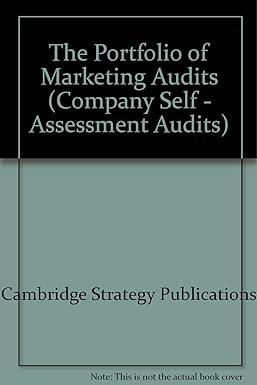Question
Professor wants to buy a new car, and of course it will be a sensible sedan, because, he is a professor. He is also concerned
Professor wants to buy a new car, and of course it will be a sensible sedan, because, he is a professor. He is also concerned about how much carbon and air pollution he will produce from his car. He is considering two cars:
-A Honda Civic sedan. The car will cost $20,500 and it will get on average 30 miles to the gallon. Assume that the 5-year repair and maintenance costs will be $3200.
-A Toyota Prius sedan. The car has an MSRP of $28,000 and it will get on average of 50 miles to the gallon. The 5-year repair and maintenance costs are estimated at $3200. After 5-7 years, she has some risk of repairing the battery systems for about $5000.
Assume that Professor will drive the American average of 10,000 miles /year.
1. Calculate the amount of gas he will use for each car for a year, and assume gas is $3/gallon, calculate the difference in annual fuel costs.
2. Determine how many years he will need to own the Prius to make up the initial price difference. [Note that we are ignoring the added costs of financing, assume a stable gas price, and ignore the depreciation, effects of inflation, etc.]
3. Based on this analysis, why do you think consumers choose a Prius vs. a Civic?
4. Now, expand this analysis. Calculate the gallons of gasoline consumed per 10,000 miles for vehicles that range from 10 to 60 mpg. Plot the result in a graph (use a spreadsheet and graphing software like Excel) with gallons per 10,000 miles on the y-axis and mpg on the x-axis. Save your graph you will upload this later.
5. Describe the result. What trends do you see?
6. Based on this result, imagine that you are a manager of a company and want to make the fastest increase in fuel efficiency for a fleet of cars. The fleet consists of vehicles with a range of fuel efficiencies, and you will have a limited budget to make an impact. Over what range of mpg values will you make the biggest difference in reducing the cost of fuel?
Step by Step Solution
There are 3 Steps involved in it
Step: 1

Get Instant Access to Expert-Tailored Solutions
See step-by-step solutions with expert insights and AI powered tools for academic success
Step: 2

Step: 3

Ace Your Homework with AI
Get the answers you need in no time with our AI-driven, step-by-step assistance
Get Started


